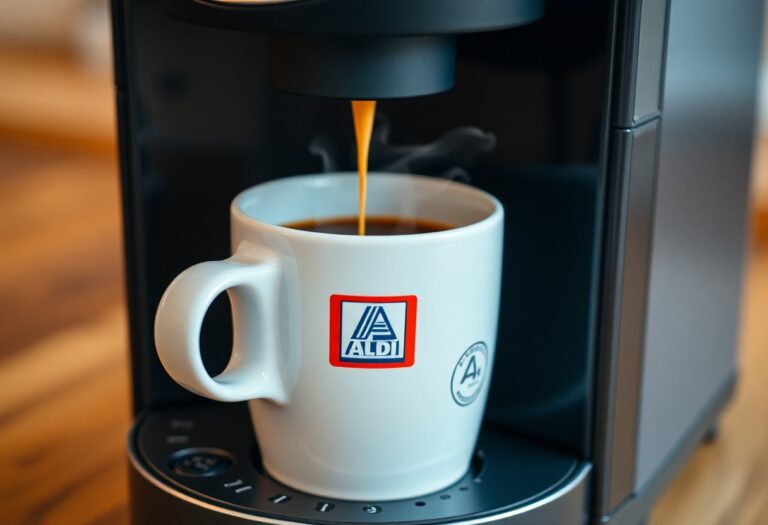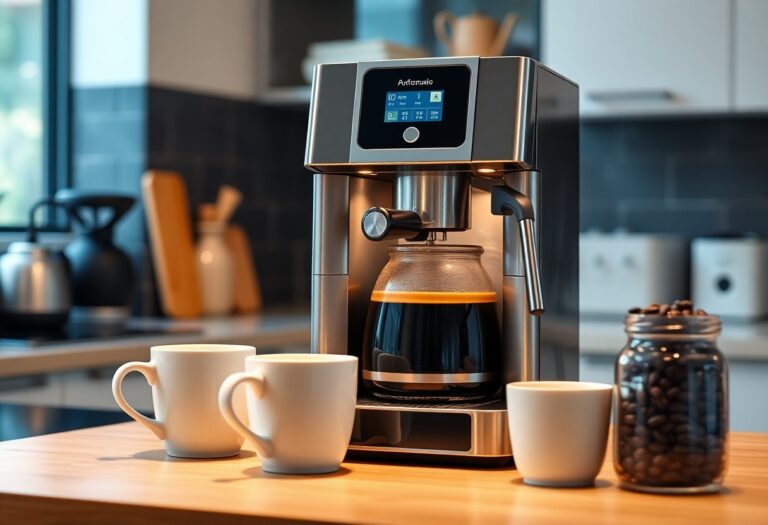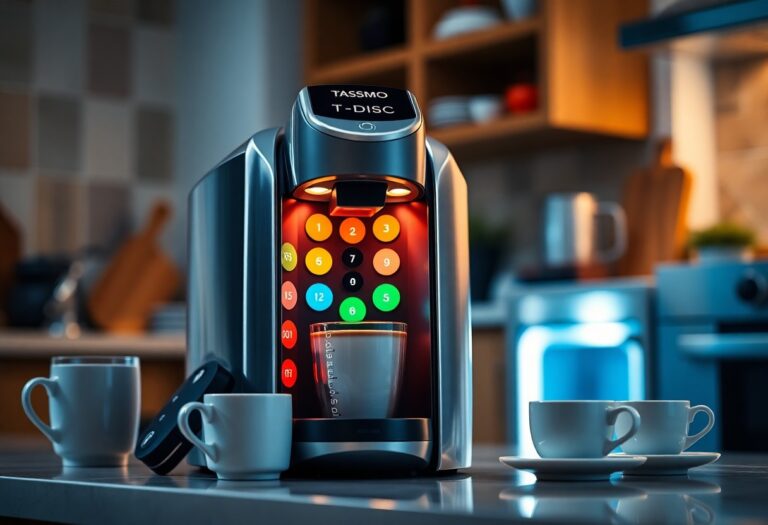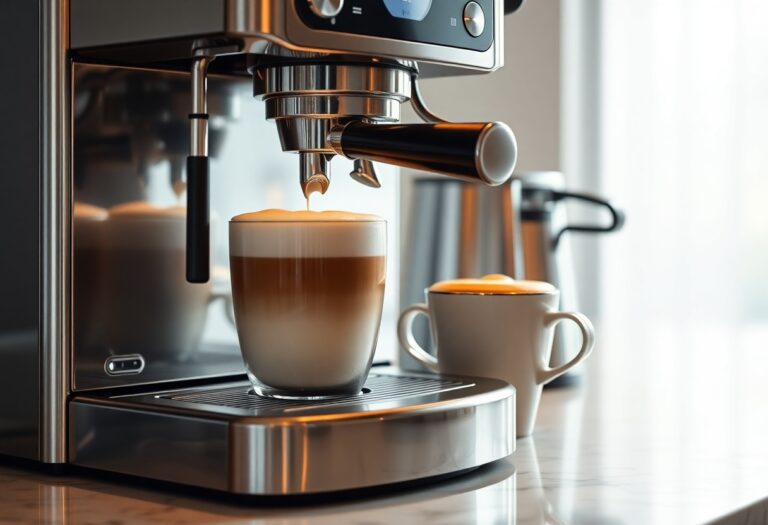What is the Best Coffee Roasting Machine – Home Roasting
Roasting your own coffee at home opens the door to a world of flavors and aromas, allowing you to craft your perfect brew. With a variety of coffee roasting machines available, it’s important to identify the one that best suits your needs and ensures consistent results. From the safety features to ease of use and control over roast profiles, you need to consider several aspects to make an informed decision. Let’s explore what makes the best coffee roasting machine for you and your home roasting journey.
Key Takeaways:
- Consider the type of coffee roast you prefer, as different machines excel in various roasting styles (light, medium, dark).
- Look for machines with adjustable settings for temperature and time to customize your roasting experience.
- Opt for machines that provide consistent heat distribution to ensure even roasting of the coffee beans.
- Check for features like smoke suppression and cooling functionality to enhance convenience and safety while roasting at home.
- Read reviews and user experiences to gauge reliability and performance before making a purchase decision.
The Art of Home Coffee Roasting
Embarking on the journey of home coffee roasting transforms your daily cup from routine to art. Each roast unveils unique flavors and aromas, allowing you to express your personal preferences. Mastering the balance of heat and time enables you to craft roast profiles that cater to your taste buds. Embracing this art form not only enhances your coffee experience but also fosters a deeper connection to the beans you select.
Discovering Your Coffee Profile
Identifying your coffee profile is important. Start by exploring various roast levels and flavor notes—light roasts typically highlight acidity and floral notes, whereas dark roasts offer bold, chocolatey tones. Engage your senses with different beans until you find the profile that excites your palate and beckons for repetition.
Selecting Green Coffee Beans
The quality of your green coffee beans significantly impacts the final flavor of your roast. Sourcing beans from reputable suppliers ensures you get fresh, high-quality products that reflect the essence of the coffee-growing region. Look for specialty-grade beans that have distinct flavor notes and are traceable to their farm source to elevate your roasting experience.
Choosing green coffee beans involves considering origins, processing methods, and varietals. For instance, Ethiopian beans often present vibrant fruit flavors, while Colombian beans can provide a balanced, nutty finish. Understanding the impact of altitude and soil on flavor profiles enables you to select beans that resonate with your desired outcome. Experimenting with single-origin beans versus blends can also unearth delightful surprises, leading you to discover new favorites and refine your personal coffee journey.
Machinery Mastery: Finding Your Ideal Roaster
Finding the perfect coffee roasting machine ultimately depends on your specific needs and preferences. Whether you seek a compact, user-friendly unit or a more advanced, feature-rich roaster, exploring options is important. To get started, consider reviewing The 7 Best Home Coffee Roasters for Fresh Beans Anytime, which provides a thorough comparison of various models.
Comparing Roaster Types: Drum vs. Air
Two primary types of coffee roasters dominate the market: drum and air roasters. Drum roasters utilize a rotating chamber that provides consistent heat and helps develop deeper flavors, making them ideal for achieving medium to dark roasts. Air roasters, on the other hand, rely on hot air circulation for quicker roasting times and can produce brighter, lighter roasts. Here’s a quick comparison:
| Feature | Drum Roaster |
|---|---|
| Heat Source | Direct from drum |
| Roast Time | Longer |
| Flavor Profile | Rich, complex |
| Capacity | Larger |
| Control | More |
Assume that you want to find a machine that perfectly matches your flavor preferences and roasting style. Choosing between these two types significantly impacts your home roasting experience.
Key Features to Consider
Focusing on the important features while selecting your coffee roaster enhances your overall experience. Important elements include roast capacity, temperature control, and cooling time.
- Roast Capacity – Understand how much coffee you need.
- Temperature Control – Look for adjustable settings for precision.
- Cooling System – Essential for stopping the roasting process effectively.
- Bean Visibility – Transparency helps you monitor your roast.
- Ease of Cleaning – Maintenance affects longevity and performance.
After considering these features, you’ll find it easier to select the right roaster tailored to your coffee roasting ambitions.
Delving deeper into the key features, you may want a machine with advanced settings that allow for precise thermal management and well-calibrated airflow. Look for options that include built-in timers, customizable profiles, and easy access to the roasting chamber for monitoring progress. Additionally, choose a unit with efficient cleaning mechanisms, facilitating a hassle-free maintenance routine.
- Built-in Timers – Automatically track your roasting time.
- Customizable Profiles – Save and replicate your favorite roasts.
- Efficient Cleaning Mechanisms – Simplify post-roasting tasks.
- Heat Distribution – Ensures even roasting performance.
- Durability – Select materials that withstand frequent use.
After exploring these key features, you’ll be one step closer to finding a machine that fulfills your home roasting dreams and elevates your coffee experience.
Navigating the Roasting Process
Successfully roasting coffee beans at home requires an understanding of various stages and precise control over timing and temperature. By mastering these elements, you can unlock a world of flavors and aromas, transforming your coffee experience. Each roast is a journey with distinct characteristics that reveal themselves as the beans progress through their transformation.
Understanding Roasting Stages
Roasting coffee involves multiple stages, from the initial green bean to the final roasted product. During the first crack, beans will expand and crack, signaling the start of the development of flavors. As you progress to the second crack, oils emerge, introducing richer, bolder tastes. Each stage offers distinct flavor profiles, making knowledge about them important for achieving your desired roast.
Timing and Temperature Control
Effective timing and temperature control are vital for achieving the perfect roast. Keeping a meticulous watch over the roast duration, typically ranging from 10 to 20 minutes, allows for adjustments based on your flavor preferences. Temperature plays a role as well; for instance, staying between 400°F to 460°F will often yield optimal results for different roast types.
| Element | Details |
|---|---|
| Roast Duration | Generally between 10 to 20 minutes, depending on the desired roast level. |
| Temperature Range | Optimal roasting temperatures typically fall between 400°F to 460°F. |
Utilizing a reliable thermometer and timer enhances your roasting precision. Familiarize yourself with your machine’s features, like heat settings, to fine-tune your roasting experience. Monitoring these parameters closely allows for adjustments based on real-time feedback during the roast, leading to the delightful flavors you cherish.
| Aspect | Importance |
|---|---|
| Thermometer | Essential for maintaining accurate temperature measurements throughout the roast. |
| Timer | Helps track the total duration for each roast level, ensuring consistency. |

Refining Your Brew: Post-Roasting Techniques
Post-roasting techniques play a vital role in enhancing the flavor and experience of your freshly roasted coffee. After roasting, the flavor compounds in the coffee beans are still volatile, and managing their release is key to achieving an exceptional brew. With techniques like cooling, storing, grinding, and brewing, you can significantly elevate your coffee experience, making it even more enjoyable and rewarding.
Cooling and Storing Your Beans
Once your coffee beans have cooled to room temperature, it’s imperative to store them properly to maintain their freshness. Utilize airtight containers made of glass or ceramic to keep out unwanted air and moisture. A cool, dark place, away from sunlight and heat sources, is ideal for storage. Aim for consumption within two weeks of roasting for the best flavor, as beans tend to lose their aromatic properties over time.
Grinding and Brewing Fresh Coffee
The way you grind and brew your coffee significantly influences its taste and aroma. For the best results, grind your beans just before brewing. Different brewing methods require different grind sizes; for instance, a coarse grind works well for French press, while a fine grind is suitable for espresso. This freshness ensures your cup delivers the vibrant flavors you’ve worked so hard to achieve during the roasting process.
Grinding immediately before brewing unleashes the imperative oils and pungent aromas locked within the beans, elevating your coffee experience. Investing in a quality burr grinder allows for precise control over the grind size, ensuring an even extraction, which is vital for balancing flavors. The method you choose—be it pour-over, espresso, or cold brew—will guide the grind size, so stay aware of your technique. Careful attention to these details transforms your meticulously roasted beans into a delightful cup of coffee that showcases your efforts.

The Community of Home Roasters
Joining the vibrant community of home roasters enhances your journey, offering support, advice, and camaraderie. Engaging with fellow enthusiasts allows you to share your triumphs and failures, ensuring you continuously improve your roasting techniques. For tailored recommendations, consider checking out Home roaster suggestions? : r/roasting, where experienced roasters actively contribute insights and tips.
Connecting with Fellow Enthusiasts
Participating in online forums, social media groups, or local clubs connects you with passionate individuals who share your love for coffee roasting. These platforms foster discussions about specific machines, techniques, and beans, creating an engaging learning atmosphere. Finding a mentor or a roasting buddy through these connections enhances your knowledge and depth of experience.
Online Resources and Learning Platforms
Beyond personal interactions, numerous online resources exist to bolster your roasting skills. Websites, podcasts, and video tutorials can guide you through the intricacies of coffee roasting, presenting both beginner and advanced techniques. You’ll discover a wealth of knowledge on topics from bean selection to experimenting with different roasting profiles.
Consider investing time in platforms like YouTube, where expert roasters share their experiences and roasting sessions. Interactive workshops and webinars can also be immensely helpful, allowing you to ask questions and receive direct feedback. Online courses are available that cover everything from flavor profiling to the science of roasting, equipping you with the skills needed to elevate your home roasting game. Participating in discussions on forums or social media groups can lead to discovering exclusive resources tailored to your specific interests and challenges. Embrace these opportunities, and watch your coffee roasting expertise flourish.
Conclusion
Summing up, choosing the best coffee roasting machine for your home setup depends on your personal preferences, budget, and roasting goals. Whether you prioritize convenience, batch size, or control over the roasting process, there is a machine out there that can enhance your coffee experience. By understanding your needs and exploring different options, you can elevate your home roasting journey and enjoy fresh, flavorful coffee tailored to your taste.
FAQ
Q: What factors should I consider when selecting a coffee roasting machine for home use?
A: When choosing a coffee roasting machine, consider the following factors: capacity, ease of use, consistency in roasting, heat source (air or drum), and control options. Look for machines with adjustable temperature settings and a cooling feature. Additionally, consider the size and design of the machine to ensure it fits your kitchen space.
Q: Are there specific brands known for quality home coffee roasting machines?
A: Yes, several brands are recognized for producing high-quality home coffee roasting machines. Some popular brands include Behmor, Hottop, Gene Cafe, and Fresh Roast. Each brand offers different models catering to various preferences and budgets, so researching specific features can help you find the best fit for your needs.
Q: How much does a good home coffee roasting machine cost?
A: The price of home coffee roasting machines varies widely depending on features and capacity. Entry-level machines can be found for around $100, while higher-end models can range from $300 to over $1,000. Investing in a reliable machine will improve your roasting experience and the quality of your coffee.
Q: How can I achieve consistent roast profiles with my home coffee roasting machine?
A: To achieve consistent roast profiles, keep track of your roasting times, temperatures, and bean types. Document each roast and make adjustments based on the desired flavor profile. Most machines allow you to control variables like airflow and temperature, so experiment with these settings and find the optimal combination for your taste.
Q: Is it difficult to learn how to roast coffee at home?
A: Learning to roast coffee at home can be a fun and rewarding process, but it does require patience and practice. Start with small batches and focus on understanding the roasting process, as well as the characteristics of different beans. There are many online resources, blogs, and tutorials to guide you through the basics, making it easier to gain skills over time.







